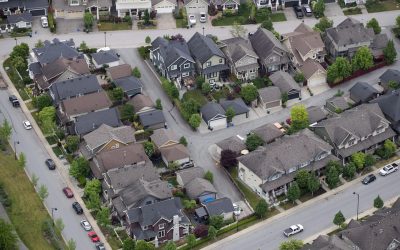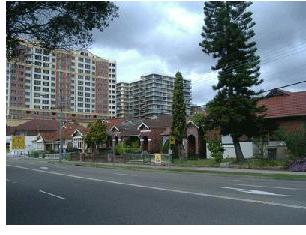Canada’s mayors are thinking big transportation thoughts this week, full of hope that Next-Prime Minster Paul Martin will finance a new era of public transit lines, roadways, trains and other showcase projects.
While they’re waiting, they might turn their mind to long-neglected little improvements. Though unsuited to ribbon-cutting ceremonies, taken together they would dwarf the benefit of any new infusions of cash they’re likely to get.
Here are four small ways to make a city’s neighbourhood roads work better, all of them cost-effective, all of them betterments to the quality of life, none of them needing money from away.
Fire hydrants. On-street parking, typically the biggest neighbourhood grievance, is often in short supply, particularly where land is valuable. Cities sometimes respond by razing houses to create parking lots, sometimes by requiring new developments to oversupply parking. City governments would do better to move fire hydrants that have no business being where they are.
Because cars are prohibited from parking on either side of fire hydrants (three metres in Toronto or Regina, five metres in Montreal or Victoria), a fire hydrant placed in the middle of a block often removes two or more parking spaces from public use. When parking shortages exist, such hydrants should be moved near street corners (where parking is in any case prohibited), near driveway entrances, across the street (when parking is prohibited there), or to “choke points” and other traffic calming devices that now protrude from curbs. While we’re at it, let’s also adopt a more sensible prohibition: Australian cities such as Adelaide allow parking to within one metre of a fire hydrant — plenty of room for the burliest of firefighters to get through.
Two-way neighbourhood streets. To improve traffic flow, cities converted many two-way streets to one-way streets, and sometimes banned parking on one side. Through-traffic then used neighbourhood roads more intensively, and at higher speeds. When neighbourhoods objected, cities responded by adding speed bumps, changing street directions to turn neighbourhoods into mazes and otherwise punishing all users of the local roads. It punished locals in other ways, too — speed bumps increase gasoline emissions and impede emergency vehicles. Much better to restore two-way streets where feasible, increasing the convenience of local roads for local residents, or to allow parking on both sides of streets. Either measure would slow driving speeds — they provide “choke points” in spades — while providing great amenity.
Expand rights to residential street parking. Households that include a disabled person are often entitled to a reserved spot on the street in front of their house. This is sensible: Although the disability can be mild and the car rarely used by the household’s disabled occupant, a dedicated parking spot aids all house occupants.
But those without disability may be no less worthy, and have no less need. Take the elderly, who might not pass as disabled but are nevertheless frail or at risk of falling on slippery wintry sidewalks. Why should an arbitrary city bylaw require them to walk considerable distance from car to home? Or a parent with young children, one of them asleep, returning home with the week’s groceries. The impossibility of comfortably negotiating such everyday circumstances coerces people into leaving their city homes for less dense locales. Elder- and family-friendly on-street parking bylaws would give city residents more choices. Dedicating most or all street parking to local residents and their visitors would extend the choice to all and more efficiently use scarce road space to boot.
Currently, when a disabled resident with a dedicated parking space is away for the day, or for extended periods of time for business or leisure, the parking spot can stay idle, useful to no one. Other street parking spots, whose access is generally governed crudely by restrictions that apply at certain times of the day or the year, also operate inefficiently: Tradesmen avoid servicing residents at those times, to avoid parking tickets, or they keep an eye out for the parking police if they do. Guests might also schedule their visits to avoid parking prohibitions.
But if residents controlled their own street parking spots, they’d soon learn to manage them well. Some would share them with neighbours and others who had extraordinary parking needs, much as neighbours lend each other lawn mowers. Others might choose to rent their spots out during hours they wouldn’t otherwise be needed — earlier this year in London, when a new toll system for vehicles entering the downtown core created a demand for parking just outside the core, an Internet site soon materialized to match up those with parking spots to those without.
Give businesses access to dedicated parking, too. Businesses should likewise be able to control parking spots outside their establishments. Some — say daytime businesses such as dry cleaners — may reserve them for their customers during business hours and then later make them available to evening businesses — say restaurants. Businesses that want to provide their customers with additional dedicated parking during peak hours would also be able to reserve parking spaces with their residential neighbours around the block, who might not need the parking space while they’re at work.
Whether businesses or residents controlled street parking, the city treasury would justly benefit: Dedicated parking spots would warrant much higher parking permit fees, helping to fund the social services and other needs that cities provide.
An urban economy is full of niches that centralized road or parking authorities – political bodies that seek to maximize neither revenues nor individual benefits — can’t possibly manage efficiently. Turn over some responsibility to those best able to capitalize on them — the thousands of little businesses and residents on the ground in the community — and big benefits will follow. For more benefits still, attend to the fire hydrants and other relics of some long-gone bureaucracy that survive unquestioned to silently stifle the modern economy.
Lawrence Solomon is executive director of , a division of Energy Probe Research Foundation.
Urban Renaissance Institute E-mail: LawrenceSolomon@nextcity.com.
© Copyright 2003 National Post


